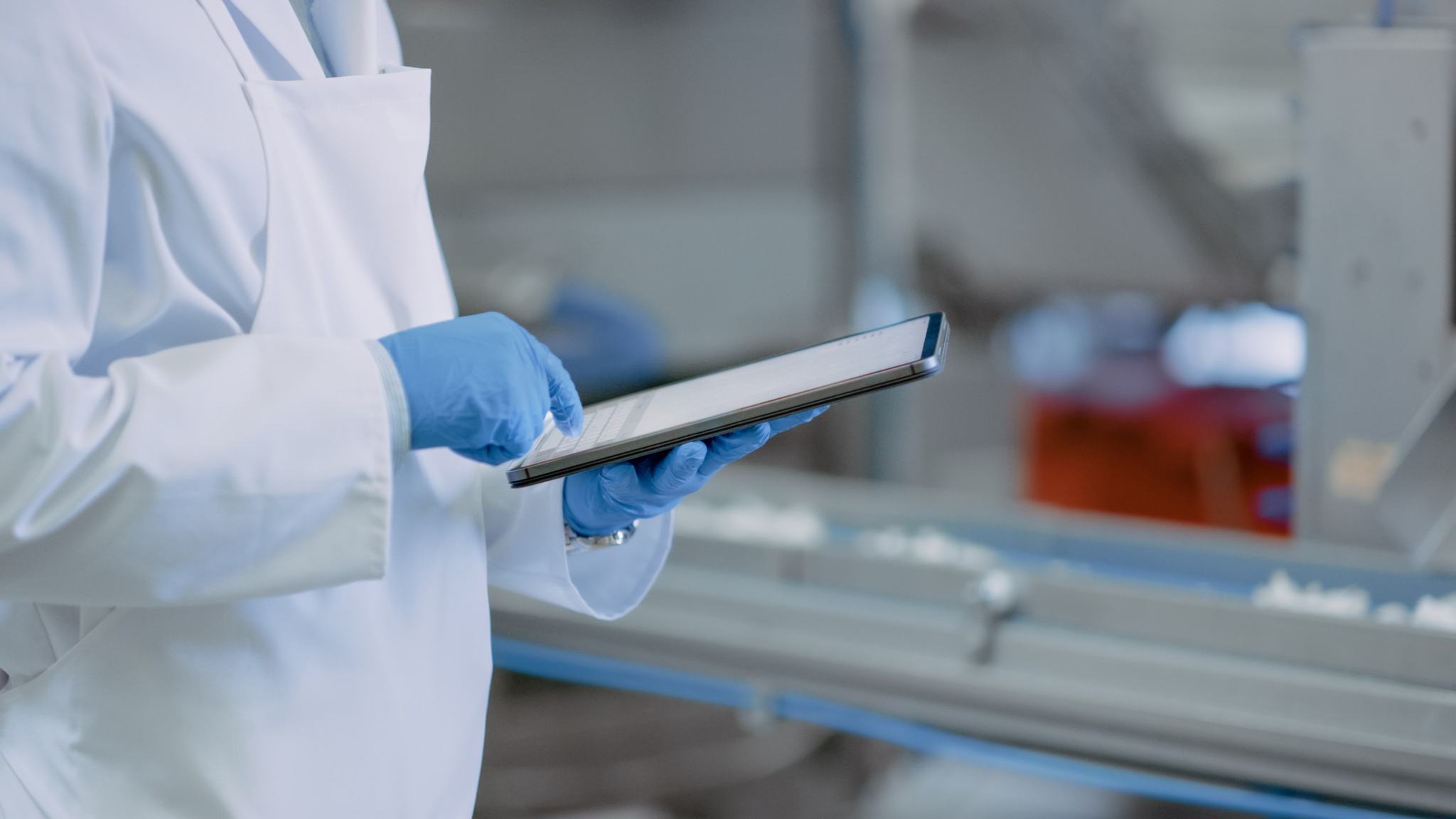A robust, digitized system for food traceability can bring enormous benefits for productivity, profitability, compliance, and corporate image. Here we consider the role an intelligently connected production environment plays in improving food traceability.
Traceability is one of the most important building blocks in food safety. For food processors and manufacturers, the ability to trace all their products and ingredients is crucial, both in daily operations and in crisis management situations, such as product recalls.
The era of Industry 4.0 has opened up significant opportunities for improving food traceability with digital solutions. In this article, the food safety and detection experts at Sesotec explain the basics of food traceability and the key role of intelligent machines in improving the speed and precision with which companies in the food industry can trace their products.
What is traceability of food?
The traceability of food, also known as product traceability, is the ability to track the movements of a food product through the individual production stages and the entire supply chain. The traceability of food maps the complete "journey" of a product through the food industry, from the raw materials to the final sale.

Why is the traceability of food important?
The traceability of food is a cornerstone of food safety. It facilitates the rapid identification, location, and withdrawal of products that are deemed defective or suspected to be defective.
The capabilities of product traceability are invaluable in the event of a product recall. If manufacturers can accurately track which batches were sold where, they can act quickly to remove the defective products from the shelves.
Beyond product recalls, food traceability can also help identify food safety issues at an early stage, thus preventing their spread.
Especially in a globalized food industry, food traceability is more important than ever. Given increasingly complex supply chains and tight profit margins, inadequate food traceability can endanger consumers, lead to an enormous amount of food waste, and exacerbate the negative consequences associated with food recalls for manufacturers.

Requirements for the Traceability of Food
The traceability of food is a fundamental component of food safety regulations. To meet legal requirements (e.g., EU Regulation 931/2011) and third-party certification programs (e.g., IFS Food V7), companies in the food industry must be able to demonstrate that they have a functioning food traceability system.
At a minimum, all food products and raw materials passing through a food processing operation must be traceable - "one step back, one step forward." To meet these standards, food processing operations must implement systems and methods to track the specific source and destination of all incoming and outgoing raw materials and products.
In addition to storing information about the raw materials and products themselves (such as delivery date, quantity, batch numbers, etc.), food traceability systems must also include up-to-date contact information for each supplier and recipient. In the event of a problem, this documentation serves to provide upstream and downstream partners with access to all data necessary to locate and, if necessary, retrieve the faulty food products.
The digitization of food traceability
The regulations and standards for food safety specify which information must be documented to ensure the traceability of food. The type of technology to be used to ensure food traceability is not specified. In its most basic form, a physical logbook with handwritten entries could theoretically suffice as a system for food traceability.
In the age of Industry 4.0, however, companies in the food industry are increasingly relying on digital solutions for product tracking. An intelligent networking of data management systems and devices within a food processing facility can ensure compliance with food traceability while also providing further valuable data insights into a company's production processes.
How digital product tracking works
Devices for detecting contaminants are crucial for improving the traceability of products. Metal detectors and X-ray inspection systems are used for quality control at key points in the food production process (e.g., during goods receipt inspection, final product inspection, and at critical control points during processing), where documentation of work steps is already mandatory.
The advanced technology for detecting contaminants can be connected to a central data management system to automate process analysis, monitoring, data storage, and reporting. For each examined product batch, the logbook software of the metal detector or X-ray system generates detailed reports designed to include all necessary product tracking data. As a food product goes through the various stages of production, the traceability data can be automatically supplemented.
The advantages of digital product tracking
The intelligent integration of product inspection into the food traceability system can provide a food processing company with the ability to identify and locate defective products in real-time. The logbook software can automatically generate and archive reports that are equipped with current traceability information and comply with food safety record-keeping regulations. If a product recall becomes necessary, the speed and thoroughness of digital record-keeping can make the difference between a quick and well-managed recall and reputational damage.
A sophisticated food traceability system not only helps manufacturers quickly remove contaminated products from circulation but can also provide data insights that help determine the source of contamination. These could be issues with suppliers, improper handling, or machine wear. Such information can prove useful in many ways, for supplier selection and evaluation as well as for process improvement. By isolating the cause of contamination and the affected batches, the manufacturer can reliably confirm which products are safe and can remain in circulation.
Conclusion: On the way to standardizing the digital traceability of food
The state of the art in connected product tracking and control offers a range of valuable benefits for food processing and manufacturing companies. However, since there is currently no industry-wide standard for data communication protocols, the potential of this technology is hampered by different data formats from company to company. Highly efficient traceability of food can be promoted by one player along the supply chain, but upstream or downstream partners may store their traceability information in incompatible data formats, slowing down communication between companies.
The OPC UA protocol is on its way to establishing itself as the leading system for a universal communication standard in the industry. If the entire food industry were to adopt the OPC UA protocol for networking production facilities, seamless communication between partners could take place in a secure, efficient, and compliant manner. The synthesis of traceability data from multiple partners in the food industry could revolutionize food traceability, leading to a significant reduction in food and energy resource waste and greatly improving consumer protection.

